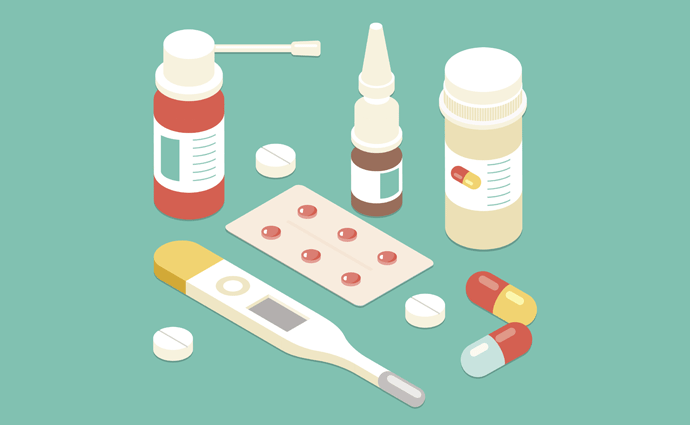Telehealth, mHealth Tools Smooth Out the Rough Edges for Transplant Patients
Telehealth platforms and mHealth apps are helping transplant patients and their care teams improve care coordination and management, leading to better life experiences and fewer office visits.

Source: ThinkStock
- For people with chronic health concerns, mHealth apps and telehealth platforms offer an on-demand platform for connecting with care providers and enjoying a better life outside the doctor’s office or hospital room.
For Bill Soloway, who underwent a heart transplant roughly six years ago, a new mHealth app is helping to improve care management and coordination, giving him more time to pursue passions like cycling and ensuring that his care team at Penn Medicine has up-to-date information on his health. Developed by CareDx, the app allows him to manage post-transplant appointments and medications and gives him health and wellness resources.
“It’s really helped a lot,” says Soloway, who’s president of the Philadelphia chapter of the Transplant Recipients International Organization (TRIO). “Prior to my transplant, telehealth was not used that much. Now, it’s part of my life.”
Especially during the coronavirus pandemic, which has limited in-person healthcare encounters to the necessary blood draws, biopsies and occasional check-ups that go with living with a new organ.
“I’m immunosuppressed, so I have to be especially careful,” Soloway says. “With COVID, I’ve been saying to everybody ‘Welcome to my world.’”
READ MORE: New Project Trains mHealth on Medication Adherence for Transplant Patients
More than 700,000 organ transplants occur each year in the US, and in every case that procedure is followed by a life-long collaboration with a care team that monitors vital signs, keeps a close watch for rejection, and manages an ongoing routine of tests and medications that seek to ensure that patient and organ get along with each other.
Connected health technology is helping to make those collaborations more seamless, giving providers insight into their patients’ daily routines, allowing them to monitor and adjust treatment in real-time and reducing the need for in-person care.
Maarouf Hoteit, MD, associate medical director of the liver transplant program at Penn Medicine, says tools like telehealth platforms, mHealth apps and remote patient monitoring programs are fast becoming the norm, both before and after the transplant takes place.
“Telehealth is extremely well suited for patients who are following a standardized evaluation or management plan, which is common in organ transplant candidates and recipients of organ transplant,” he says. “These are often situations where the primary goal of the visit is not necessarily to evaluate a new symptom, but to ensure implementation of a therapeutic plan in a way that optimizes the outcome.”
“Organ transplant candidates often deal with a complex evaluation process involving extensive testing, and in this context televisits are instrumental in discussing test results, reviewing the necessary steps for completion of the evaluation as well as monitoring the status of the failing organ for which the patients are evaluated,” he adds.
READ MORE: The Promise and Potential for Telehealth in Home Health
Once the transplant is completed, Hoteit says, it’s important that the care team monitor the patient for rejection, especially during the first months or even years. And they’re helping the patient to adjust to a new and lifelong routine.
“Organ transplant recipients, particularly early after their operation, are learning how to live with a transplanted organ,” he says. “The management focuses on new medication - particularly immunosuppressive drugs - where dosing decisions can involve a delicate balance between assessing the drug adverse effects and the risk of rejection. As a result frequent medication dose adjustment is usually necessary.”
“The other key element of the early post-transplant evaluation is the assessment of the function of the transplanted organ, and assessment of any complications of transplant. This component can also frequently be achieved to satisfaction via telehealth, especially in cases where no deviations from the standardized plan of care are necessary,” he continues. “Long term after transplant, there are, in addition, specific risks of long-term use of immunosuppressive drugs that require assessment, again following a standardized approach that is quite amenable to being effectively executed through a telehealth visit.”
Aside from using telehealth to help providers monitor patients after their transplants, Soloway - who helped CareDx develop its AlloCare transplant app - says mobile health tools can give patients more control over their own care.
But they have to be well-designed. At times in the past he’d been using four different mHealth apps to manage things.
READ MORE: New CMS Payment Model for Kidney Care Could Boost Telehealth Use
“They have to be versatile, and they have to be customizable,” he says. Apps can track data for both the patient and the care team, and if that data is collected and used in the right places, it can help with everything from medication to diet and exercise.
“There’s an opportunity here to be very proactive with care,” he says. That would include synching the app and platform with connected devices like weight scales, blood pressure cuffs, smartwatches, even exercise equipment, as well as creating links to online peer support.
The idea, he says, is to create an always-on, interactive platform that delivers care and guidance when needed and saves the in-person visits for what can’t be handled online.
“I believe telehealth will remain a very important component of our patient evaluations for the long run,” says Hoteit. “I think we will be looking at a hybrid model where some of the patient visits can be conducted remotely – particularly when the goal is predominantly monitoring of the patient’s health, or monitoring the implementation of a treatment plan – and some visits, particularly when evaluated a new symptom or a particularly complicated medical problem, will need to be conducted in person.”
